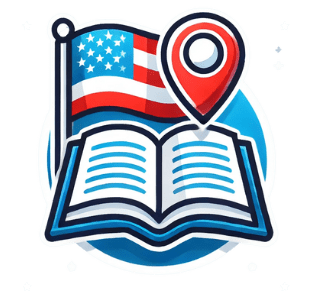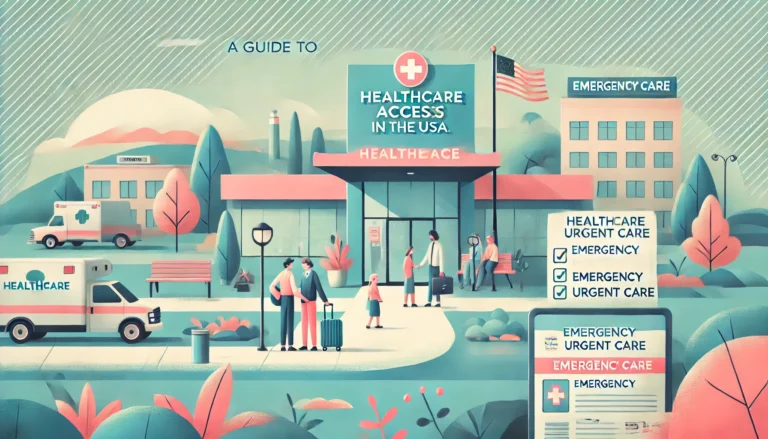Navigating US Highways Tips for First-Time Drivers
Introduction
Navigating U.S. highways can be a daunting experience for first-time drivers. With multiple lanes, varying speed limits, and the need to keep track of exits, it’s essential to be well-prepared before hitting the road. Here’s a guide with tips for first-time drivers to safely and confidently navigate highways across the U.S.
Navigating US Highways Tips for First-Time Drivers
1. Understand Highway Signs and Symbols
- Speed Limit Signs: Speed limits can vary from state to state and even between highways. Look for posted speed limit signs and adjust accordingly.
- Exit Signs: Exit signs usually indicate the distance to the exit and the direction. If you’re nearing your exit, start moving to the appropriate lane well in advance.
- Mile Markers: Mile markers can help you track your location, find landmarks, and calculate distances to exits or other destinations.
Tip: Review common road signs before you drive to familiarize yourself with U.S. traffic symbols.
2. Stay in the Right Lane if You’re New
- Right Lane: The right lane is typically the safest place for slower-moving or less experienced drivers. It allows you to exit easily and reduces the chance of getting in the way of faster traffic.
- Left Lane: The left lane is for passing and faster traffic. Only use it to overtake other vehicles or if you’re preparing for a left exit.
Tip: On multi-lane highways, stay in the middle or right lane and avoid frequent lane changes.
3. Keep a Safe Following Distance
- 3-Second Rule: Maintain at least a three-second gap between your car and the one in front of you. Increase this distance during bad weather or in high-speed zones.
- Avoid Tailgating: Tailgating can lead to rear-end collisions and causes unnecessary stress for both drivers. Give yourself enough room to react to sudden stops.
Tip: Watch the vehicle ahead pass a fixed point, and ensure you reach that point no sooner than three seconds later.
4. Plan Your Route in Advance
- Use GPS or Maps: Use a GPS device or a mapping app to help you stay on course, find exits, and avoid getting lost.
- Familiarize Yourself with Exits: Knowing where to exit in advance will reduce the need for last-minute lane changes.
Tip: Enter your destination into your GPS before starting your journey, so you’re not distracted by navigating.
5. Be Aware of Large Trucks
- Blind Spots: Large trucks have sizable blind spots on all sides, particularly on their right. Avoid driving directly beside or too close to the rear of a truck.
- Passing Safely: When passing a truck, do so quickly and avoid lingering in its blind spots.
Tip: If you can’t see the truck driver in their mirror, they likely can’t see you.
6. Merge Carefully
- Check Your Blind Spot: Always check your blind spot before merging onto the highway or changing lanes.
- Match Speed: When merging onto a highway, accelerate to match the speed of the traffic flow to avoid sudden braking by other drivers.
Tip: Use the acceleration lane to reach highway speed before merging to make the transition smoother and safer.
7. Use Cruise Control on Open Roads
- Maintaining Speed: Cruise control helps maintain a constant speed, which can reduce fatigue on long drives and ensure you stay within the speed limit.
- Turn Off in Traffic: Avoid using cruise control in heavy traffic or bad weather where you may need to brake frequently.
Tip: Cruise control can be a great tool on stretches with little traffic but should be avoided in busier areas.
8. Stay Alert and Avoid Distractions
- Keep Hands on the Wheel: Always keep both hands on the wheel, especially on high-speed highways where quick reactions may be needed.
- Limit Phone Use: Use hands-free options if necessary, but avoid calls or texting as it diverts your attention from the road.
Tip: Take breaks if you’re feeling tired. Fatigue is a significant cause of accidents on highways.
9. Prepare for Toll Roads
- Check Your Route for Tolls: Some highways have tolls, which may require cash, card, or electronic tolling (like EZ-Pass).
- Electronic Tolling: Consider getting an EZ-Pass or similar device if you frequently drive on toll roads, as it saves time and hassle.
Tip: Have cash or a card on hand if you’re unsure whether the route has tolls or electronic toll options.
10. Be Cautious in Bad Weather
- Drive Slower: Reduce your speed and increase your following distance in rain, fog, or snow.
- Use Headlights: In low visibility conditions, turn on your headlights (not just your daytime running lights) to improve your visibility to other drivers.
Tip: If conditions worsen significantly, consider waiting it out in a safe location off the highway.
11. Don’t Panic in Emergency Situations
- Know What to Do in Case of a Breakdown: Move to the shoulder, turn on hazard lights, and call for assistance if your vehicle breaks down.
- Handling Road Rage: If another driver becomes aggressive or tries to engage with you, remain calm, avoid eye contact, and don’t engage.
Tip: Keep a roadside emergency kit, including a flashlight, spare tire, and contact numbers, in case of an emergency.
Conclusion
Navigating U.S. highways for the first time can be a smooth experience if you’re well-prepared and practice safe driving habits. Stay alert, keep a safe distance from other vehicles, and follow posted signs and speed limits. By planning your route in advance and observing safe driving practices, you can navigate highways confidently and arrive at your destination safely.





